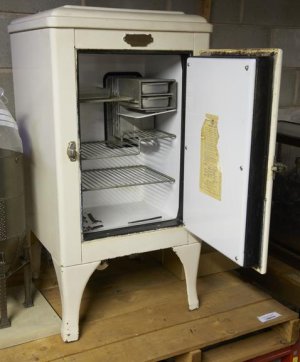The Fridge That Once Needed Fire
Before electricity, keeping food cold required something surprising—flames.
Long before the hum of modern compressors, early 20th-century innovators turned to chemistry and heat to solve a problem: how to keep food cold without ice. The result was the gas-powered absorption refrigerator—a marvel of science that literally used a small flame to make things cold.
Here’s how it worked: the flame heated a solution of ammonia, water, and hydrogen gas, causing the ammonia to evaporate. When that gas was later condensed and circulated, it absorbed heat from inside the fridge, chilling the interior. No moving parts, no electricity—just pressure, chemistry, and a steady flame doing all the work.
The concept was developed in the early 1900s, and commercial models hit homes by the 1920s and 1930s, sold by companies like Servel and Electrolux. Ads even bragged that these fridges had “no noise, no motor, no moving parts—only a flame.”
Of course, the design wasn’t without risks. A flame running continuously in a kitchen posed safety hazards, and when electric refrigeration became more reliable (and cheaper) in the 1940s, the fiery fridges slowly faded from homes.
Still, the idea wasn’t lost. Absorption cooling remains in use today, especially in RVs, camper vans, and off-grid cabins, where electricity isn’t always available. If you’ve ever taken an RV trip and wondered how your milk stayed cold overnight—yep, it’s still thanks to a little flame quietly working behind the scenes.
Ever learned something old that worked in a way you never expected? Share it in the forum—your fact might surprise someone!







